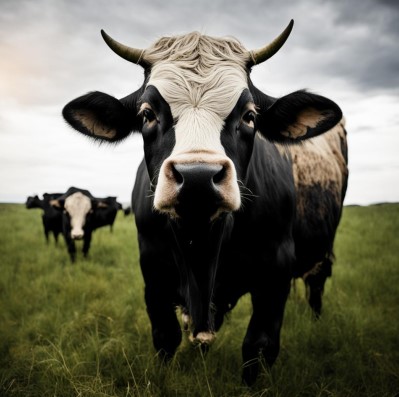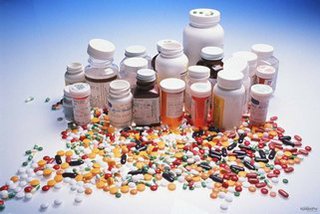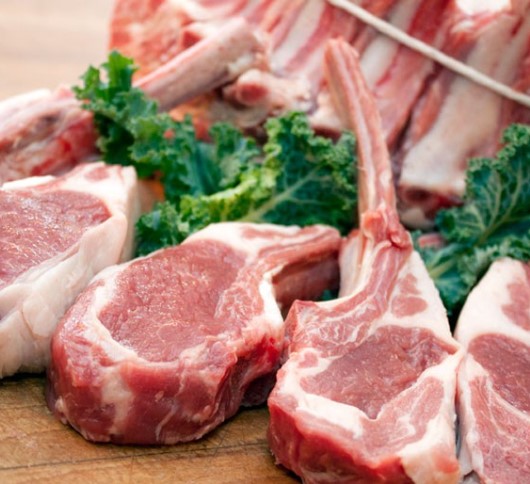The Ministry of Economic Development has laid down a two-year recession in the scenario

The Ministry of Economic Development has developed the main parameters of the scenario conditions for 2023 and the planning period of 2024-2025. Formally, this is not a forecast, but scenarios for the development of the economy (the forecast is being prepared in the autumn to prepare the budget for the next period), developed taking into account the new, “sanctions” reality. At the same time, several times a year, the ministry can clarify the scenario conditions for socio-economic development.
The Ministry of Economic Development reported that the forecast parameters have been agreed with the Ministry of Finance and, after approval by Deputy Prime Minister Dmitry Grigorenko, they will be sent to the departments. The next refinement of the parameters is planned for July-August. The medium-term forecast is made with the expectation that the sanctions pressure will continue at least until 2025.
Economic recession
The Ministry of Economic Development expects that in 2022 and 2023 the country's economy will fall - by 7.8 and 0.7%, respectively - and only from 2024 will return to growth. A month ago, the department considered the prospect of a 10% decline in GDP by the end of this year, the HEAD of the Accounts Chamber Alexei Kudrin cited the figure. Then the agency adjusted the forecast figure to 8.8% in 2022 - it was discussed at the government commission on improving the stability of the Russian economy on April 26, a representative of the ministry told reporters. At the same time, the Ministry of Economic Development expected the economy to grow by 1.3% next year, while the new estimate predicts that the decline will continue for two years.
In 2024 and 2025, the ministry expects GDP growth of 3.2 and 2.6%, respectively.
“After a period of high volatility, the economy has now broadly stabilized. At the same time, we lowered our expectations for the pace of economic recovery, shifting our forecasts for the start of recovery from the third to the fourth quarter of this year,” the ministry explained. We are talking about quarterly dynamics; the Bank of RUSSIA also announced at the end of April that the lowest point of the decline will occur in the fourth quarter of 2022, although “due to the high comparison base for the first quarter of this year, the change in GDP as a whole for next year compared to all of 2022 will be from 0 to minus 3%.
.fotorama1652823629556 .fotorama__nav--thumbs .fotorama__nav__frame{ padding:5px; height:75px} .fotorama1652823629556 .fotorama__thumb-border{ height:75px; border-width:0px; margin-top:5px} Read on RBC Pro Pro What mistakes in an option agreement will result in financial losses Instructions Pro$170 Million Mistake: Why Amazon Tried to Build an iPhone Alternativewhat companies want Articles Pro Gas supplies to the EU are falling.What will happen to the shares of "Gazprom" Forecasts Pro Development "without interference":what analysts said about the 2008 crisis Articles Pro Chinese stock market:What are the prospects for a private investor Investor Club Pro Friend or foe:which of the candidates and when to hire5 Tips Instructions
According to the Ministry of Economic Development, the main difficulties in the economy are associated with breaks in supply chains, the need to reconfigure production, as well as a significant decrease in imports, primarily machinery, equipment, and components.
Import and EXPORT
In the coming months, the situation in the economy will be primarily determined by the foreign trade balance, the ministry spokesman said, adding: "For the first time in modern history, we are entering a recession with high commodity prices."
The agency expects that in 2022 the average annual price of Russian Urals brand oil will be $80.1 per barrel, in 2023 it will drop to $71.4, and by 2025 to $61.2. On the evening of May 17, a barrel of Urals was estimated at about $82.
The Ministry of Economic Development predicts a decrease in exports and imports of goods. Thus, imports will decrease in 2022 by 27% compared to 2021 in physical terms due to logistics and contraction of domestic demand, and in value terms - by 17% (from $304 billion to $251.9 billion), taking into account global inflation and increasing transport and logistics margins. “We understand that new channels for importing goods will cost us more,” the ministry explained.
It is noted that the forecast assessment of imports includes the implementation of the entire range of support measures, including zeroing import duties on a number of goods and allowing parallel imports.
The trade surplus, according to the forecast of the agency, will grow to $230 billion, and the positive current account balance will be $190.8 billion in 2022, which will be a historical maximum. The fact that the balance, according to experts, could reach a record $200-300 billion due to expensive export oil and a reduction in imports, and the surplus will need to be absorbed somehow, RBC wrote earlier.
“As oil and other commodity prices gradually decline in the medium term, the current account surplus will shrink, imports and capital flows will gradually adapt to new conditions, and easing of foreign exchange restrictions is inevitable,” the representative of the Ministry of Economy predicted.
Inflation and incomes of the population
The Ministry of Economic Development expects that inflation at the end of the year will be 17.5%, in 2023 it will slow down to 6.1%, and then return to the target level of 4%.
At the same time, the incomes of the population next year will recover faster than the economy, although they will not keep pace with inflation. The Ministry of Economy predicts a decline in real disposable income by 6.8% this year and their growth by 1.3% in 2023.
“The base case scenario includes a proactive economic policy: it involves the effective implementation of the entire range of measures to support the economy, primarily concessional lending programs, an active reduction in the Central Bank’s key rate following inflation, and a neutral soft budget policy. These measures will make it possible not to add to the structural crisis that we are going through, also a cyclical crisis,” summed up the representative of the economic department.
Other ratings
At the end of April, the Central Bank presented its medium-term macro forecast. The regulator forecasts inflation at the end of 2022 in the range of 18-23% with a further decline to 5-7% in 2023. The Ministry of Economy's estimate of GDP decline this year is closer to the lower end of the forecast range (8-10% at the end of this year). The expectations of the Bank of Russia regarding imports are also more pessimistic: the regulator predicts its decline by 32.5-36.5% this year compared to 2021.
Expectations for a decline in GDP in 2022 were improved by SberCIB analysts on May 17 — they predict a decline of 8% instead of the previous estimate of 13%. With an optimistic forecast by the investment bank, the economy could fall by 5%.
Forecast estimates were also updated by the Center for Macroeconomic Analysis and Short-Term Forecasting (CMASF, its analysts were involved in the discussion of its forecast by the Ministry of Economy). CMASF expects inflation of 17-20% at the end of this year and 8-8.3% at the end of next. At the same time, the center's analysts consider a jump in unemployment among workers of mass professions to be a key social risk. “We need both programs to stimulate the preservation of employment at enterprises, following the model of those successfully implemented during the pandemic, and additional actions aimed at maximizing the stimulation of self-employment and reducing the burden on small businesses in areas where it is possible to increase the demand for labor (trade, services, and others)” , they note. The CMASF predicts an unemployment rate in the range of 6.8-7% on average in 2022, the Ministry of Economy - 6.7%.
An expert familiar with the discussion of the forecast at the Ministry of Economic Development, Managing DIRECTOR for Macroanalysis and Forecasting at Expert RA Anton Tabakh, believes that, in general, the forecast of the ministry looks quite balanced, given the very high uncertainty. “With adequate structural transformation and without a total drop in export earnings, most likely, the economy will be able to get out of recession in two years, as predicted by the Ministry of Economy. The Russian economy is inertial, and it is difficult to undermine it, as evidenced by the results of the pandemic 2020. But the growth planned for 2024–2025 looks extremely optimistic,” he told RBC.
Read together with it:
- Первые в центральном регионе. Узнали, какой каравай зерновых собрали в этом сезоне в ОАО "Гастелловское"Новости темы В этом году аграрии Минской области собрали весомый каравай в 2,2 млн тонн зерна вместе с рапсом, и это невзирая на все сюрпризы погоды. Первое место по итогам жатвы-2025 в центральном регионе заняло ОАО "Гастелловское". За счет чего хозяйству удается достигать таких выдающихся результатов, узнала газета "7 дней".Кропотливый труд плюс технологии и дисциплинаУспех уборочной кампании во...
- О самых распространенных причинах пожаров рассказали в МЧС2 октября, Минск. О самых распространенных причинах пожаров рассказал начальник главного управления надзора и профилактики МЧС Дмитрий Турчин на "Предупреждение чрезвычайных ситуаций в осенне-зимний период. Профилактика пожаров и гибели людей от них", которая прошла в БЕЛТА. "В республике наблюдается рост количества пожаров на 7,7%, и на 1......
- В Раменском выведена новая порода кроликов — Великородская белаяЭто значимое событие обозначает первую отечественную породу, разработанную для племенного и промышленного производства за последние 60 лет. Глава Раменского муниципального округа Эдуард Малышев посетил институт, где директор, доктор биологических наук Глеб Косовский, провел ознакомительную экскурсию для почетных гостей. Институт служит научно-методической базой для разработки технологий в области ...
- Боливия экспортирует говядину на сумму 797 миллионов долларов и вводит новые цифровые сертификаты для внешней торговлиЭкспорт говядины из Боливии в период с 2021 по 2025 год достиг 797 миллионов долларов. Китай является основным рынком сбыта этого мяса, на который приходится 74% продаж, сообщила Карина Серрудо, генеральный директор Национального таможенного управления. Параллельно с этим ведомство включило сертификат безопасности экспортных пищевых продуктов для говядины в систему «Единое окно для внешней торговл...





















































